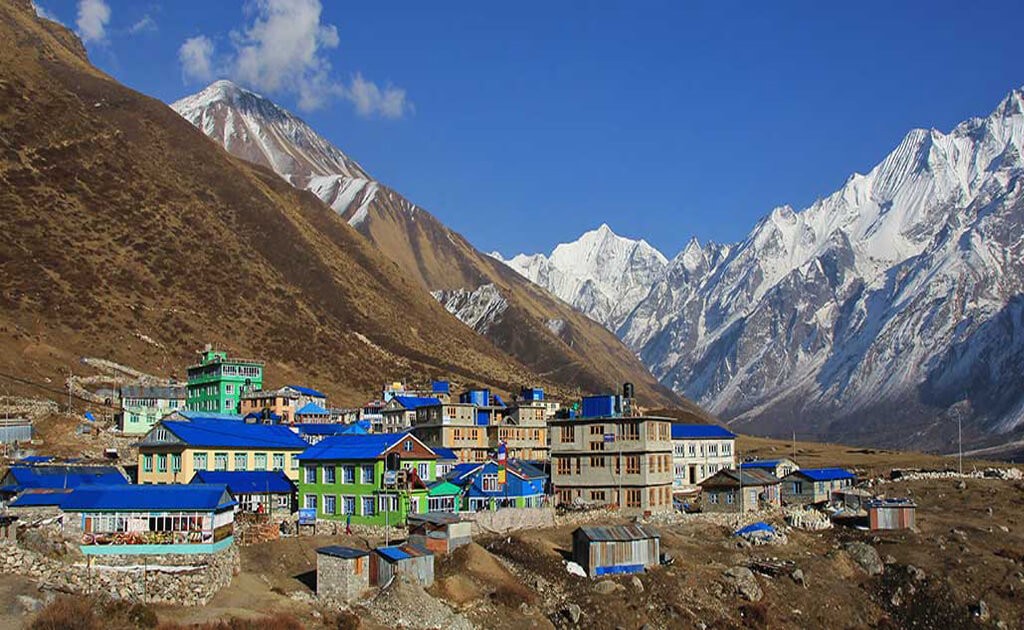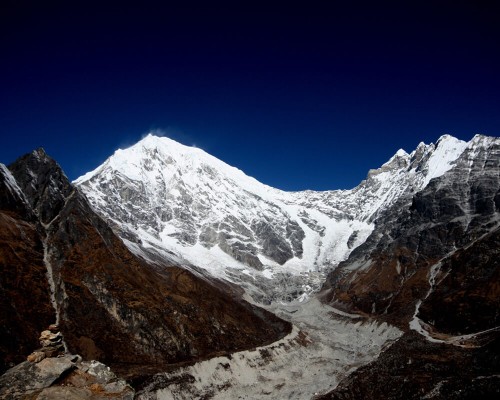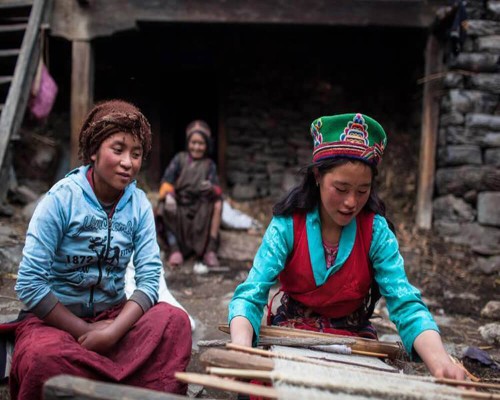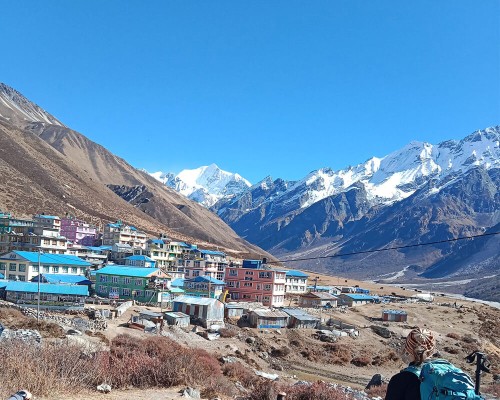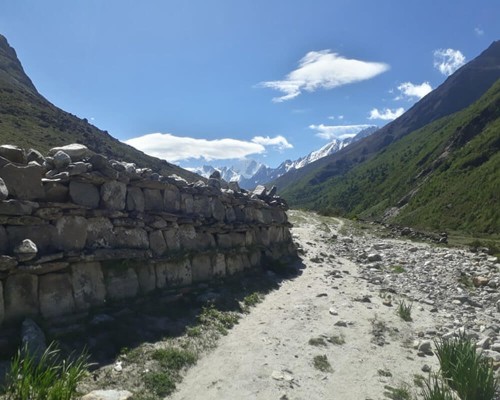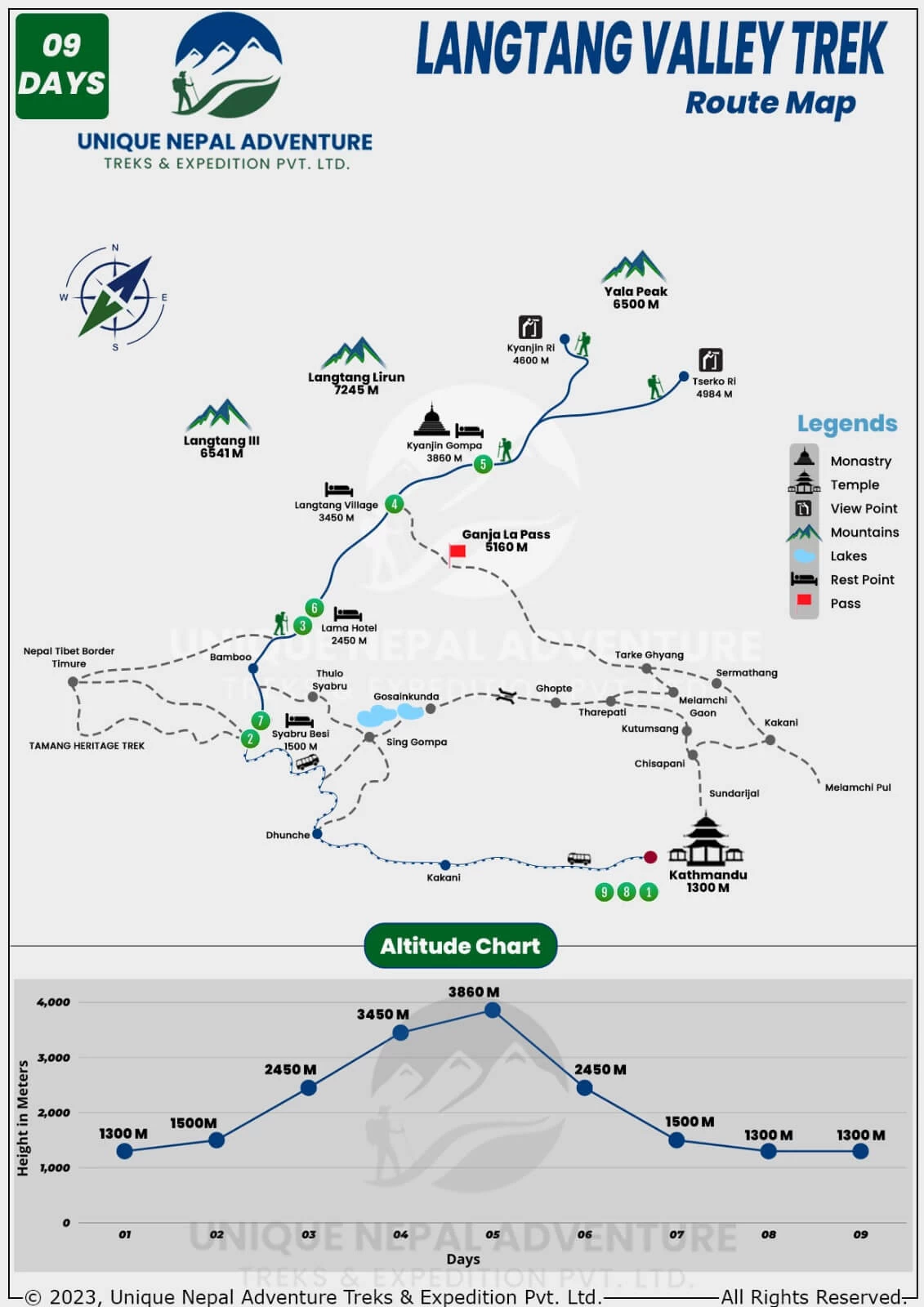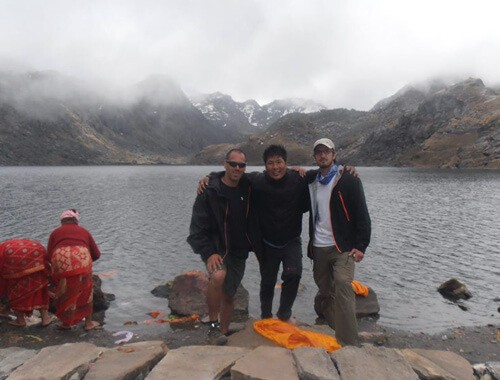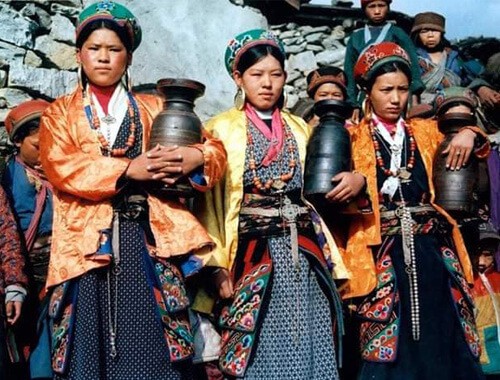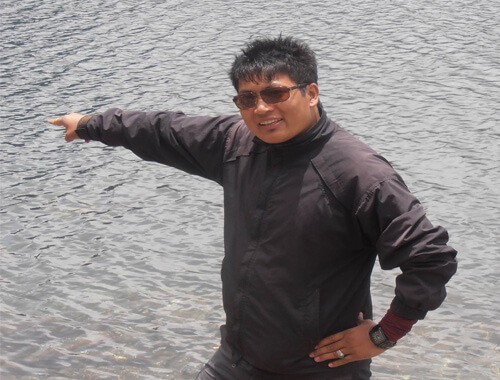Overview of Langtang Valley Trek
The Langtang Valley Trek is an exploration of the Tamang people’s lifestyle, typical culture, and Buddhist religion. It is close to the Tibetan border and is almost identical to Tibetan culture and language. The Langtang trek is short and sweet, with only 5 days of walking and 2 days by vehicle, for a total of 7 days. But from your arrival to departure in Kathmandu, plan 9 days. It is naturally, culturally, and religiously awesome.
Langtang Valley Trekking is a short combine trip with various experiences. It is a 7 to 9-day perfect itinerary at a reasonable cost. You must ascend the excellent viewpoints of Kyanjin Ri (4770 m) or Tserku Ri (4895) and view the glorious view of Langtang Ri (7234 m) and many white snow peaks. exploring the Tamang lifestyle and the typical mixed culture of Tibetans. It is a wonderful trekking destination, and we make a lifetime-memorable trip.
The local people are farmers, and they produce lots of organic vegetables and crops. They provide healthy and organic meals to their clients. There are well-managed teahouse facilities. It is an open trekking route for any month. Trekkers can visit at any time. It is an evergreen trekking route.
Kyanjin Gompa is the main destination of the Langtang trek, but we recommend hiking to the Kyanjin Ri or Tserku Ri viewpoints. You will see the magical mountain’s view, including the crystal-clear view of Mt. Langtang Lirung, Ganchengpo, Dorje Lakpa, Yala Peak, etc. The local people are tourist-friendly; they respect tourists and provide excellent services with warm hospitality. It has a fine trekking trail and a wide track along subalpine forestry. Most of the trail follows the riverside, crossing many suspension bridges.
Route of Langtang Valley Trekking Trail
Langtang Valley Trekking is easily accessible and allows for a short time to explore various things. Day one: Kathmandu to Syabrubesi by vehicle, then start your trekking journey. Day 2: Trekking to Lama Hotel, which is a nice walk in lush forestry, but most of the trail is ascending and sloping up. It is trekking along Langtang National Park, which is controlled by the national park. There are some checkpoints where we must show permits. Trekking along beautiful villages like Langtang Valley and Kyanjin Gompa, where the local lifestyle and typical cultures are, as well as their warm hospitality.
They are farmers and grow various crops and vegetables. They provide local organic meals. Likewise, they are pure Buddhists, and there are many old and new monasteries. They have lots of yak and sheep farms. They produce lots of yak cheese. It is a very yummy cheese, and they supply it to Kathmandu and many other cities.
Kyanjin Gompa is the main destination of the Langtang Valley Trek, sleeping at the highest elevation at 3860m, then an excursion to Kyanjin Ri (4770 m) or Tserku Ri (4985 m) for breathtaking panoramic mountain views such as Mt. Langtang Lirung, Dorje Lakpa, Ganchengpo, Yala Peak, etc.
Do you want to continue trekking along Gosainkunda Lake?
If you wish to continue the Gosainkunda Lake Trek along Thulo Shyabru Village, Sing Gompa, and Gosainkunda Lake, you'll need to extend your trip a few days. Gosainkunda, known as the Holy Lake, is surrounded by several other lakes, with three main ones visible. It holds significant religious importance for both Hindus and Buddhists, who come here to perform ceremonies and prayers.
The main event occurs during the full moon in August, drawing pilgrims who come to pray and take purifying baths, seeking blessings and good fortune. Typically, pilgrims embark on a short trail from Dunche to Gosainkunda, returning after 3 to 4 days. We can tailor your trip based on your available days. The 6-night, 7-day itinerary outlined below is ideal, featuring treks such as the Langtang Gosainkunda Pass 12-Day Trek, the Tamang Heritage Trail, Ganjala Pass, and Ruby Valley. For more details, please feel free to contact us.
Cost of Langtang Valley Trek
A 7-day Langtang Valley Trek costs US$400 per person, but it needs a minimum of 2 people in a group. It is only a trekking package and transportation. Kathmandu Hotel and porter are excluded. Here is some of the cost breakdown.
- The 7-day trekking cost is US$400, which includes meals, accommodation, transportation, a guide, and permits.
- Including a full board package and Kathmandu hotel and airport pick-up and drop-off, the cost is US$450 each.
- If you require a porter, the cost is US$150, which includes everything for the porter's wages.
The People, Culture, and Religion in Langtang Valley
Most of the people are inhabitants of the Tamang ethnicity under Tibetan influence because the Tibetan border is near. They have their own culture, customs, dress, language, and Buddhist religion. They have a typical lifestyle. Furthermore, they are of the Buddhist religion, and there are many Buddhist monuments such as monasteries, stupas, Mani Walls, tsorten, prayer flags, etc. Moreover, they are rich in culture and religion. They respect all religions.
Lodging and Food in Langtang Region Trek
They have well-managed lodges and full tea houses facilitated everywhere. They provide a comfortable twin bedroom with neatness and cleanliness. They grow many kinds of crops and vegetables. Furthermore, they provide hygienic, organic meals with warm hospitality.
How about transportation before starting the Langtang trek?
Some vehicles are running as local buses or jeeps, or you can take a private jeep. It is almost a 7-hour drive from Kathmandu to Syabrubesi. Normally, we provide a local bus or a local jeep at our price. If you'd like to take a private jeep, feel free.
Stunning, Attractive Mountain Views in Langtang Region
You should hike a day from Kyanjin Gompa to Kyangin Ri or Tserku Ri. You will see that magical mountain view from the top of Kyanjing Ri (4770 m/15650 ft) or Tserku Ri (4985 m/16355 ft).
- Langtang Lirung (7234m / 23733ft)
- Langtang II (6596m / 21640ft)
- Ganchenpo (6380m / 20932ft)
- Dorje Lakpa (6966m / 22855ft)
- Langshisha Ri (6427m / 21085ft)
- Yala Peak (5500m / 18209ft)
What kinds of wildlife, flora, and fauna can we see in the Langtang region?
The Langtang region is a national park; the wildlife animals are preserved here. You have a high chance of seeing these animals, such as yaks, mountain goats, red pandas, snow leopards, wild boars, deer, and many kinds of birds. They have many yak cheese factories. You can taste it as real yak cheese.
Do we need any entry permits for the Langtang Valley Trek?
Yes, you need to get some permits to do the Langtang Valley Trek. They required trekking permits. You are trekking in Langtang National Park. Our company, Unique Nepal Adventure Treks, arranges the needed permits like the ones below. There are many permit-checking posts by the National Park Service or the police. If you don’t take it, they will not allow trekking in Langtang National Park. We need your passport-size photo and a passport photocopy. We will make it ready before you arrive in Nepal.
- Langtang National Park Fee: Rs. 3000
- TIMS (Trekking Information Management System): – Nrs. 2000/-
When is the best time to visit Langtang Valley Trekking?
The best time to visit Langtang Valley Trekking is in autumn, such as September, October, November, and December; another season is spring, March, April, and May. Those months are always clear, with good temperatures, good visibility, and fantastic, crystal-clear mountain views.
The winter and monsoon seasons are also not bad. Winter is snowy and very freezing cold, and the monsoon is most of the time rainy and cloudy with poor visibility. If you like to trek in the monsoon or winter, we organize it because the Langtang Trekking Trail is very safe and wide. It is possible. We provide professional and experienced guides to make your trip safe, successful, delightful, and very pleasant.
- Autumn Season: September, October, November, and December.
- Winter Season: late December, January, and February.
- Spring Season: March, April, and May.
- Monsoon Season: June, July, and August.
Carry your Important Medicine
If you’re taking any regular medication, please bring enough with you. In the mountains, healthcare facilities are extremely limited, and local clinics may not have the medicine you need. As the saying goes, “Prevention is better than cure.”
We strongly recommend being fully prepared. Our company will provide a basic first aid kit, which includes medication for common issues like headaches, fever, stomach problems (such as diarrhea), cough, cold, bandages, tape, and Diamox for altitude sickness.

